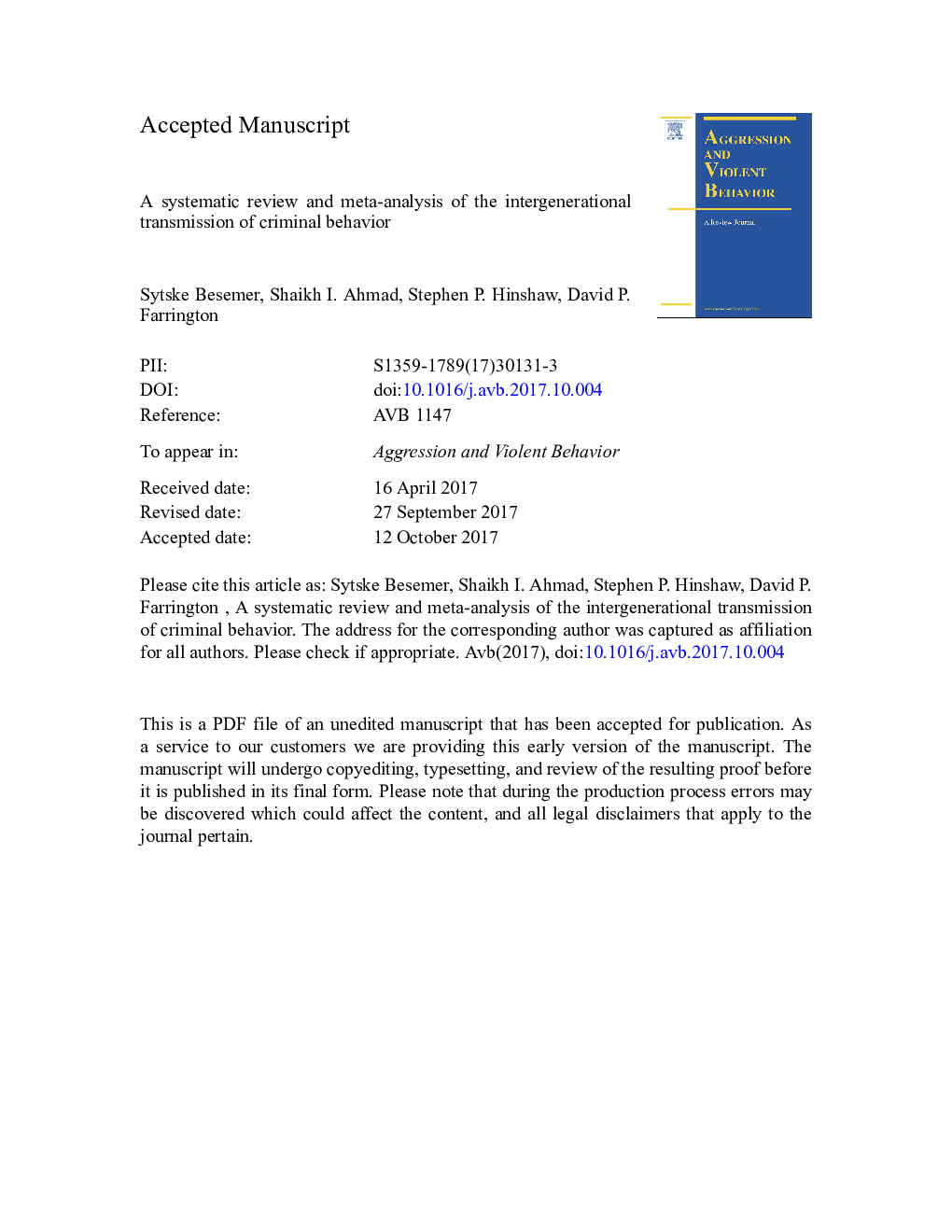| Article ID | Journal | Published Year | Pages | File Type |
|---|---|---|---|---|
| 6550141 | Aggression and Violent Behavior | 2017 | 72 Pages |
Abstract
Children whose parents exhibit criminal behavior (CB) appear to have an increased risk of displaying CB themselves. We conducted a systematic review and pooled results from 23 samples in 25 publications (including 3,423,483 children) in this meta-analysis of intergenerational transmission of CB. On average, children with criminal parents were at significantly higher risk for CB compared with children without criminal parents (pooled ORÂ =Â 2.4). Studies taking into account covariates also showed increased risk for CB (pooled ORÂ =Â 1.8). Transmission was strongest from mothers to daughters, followed by mothers to sons, fathers to daughters, and fathers to sons. Moreover, transmission appeared stronger for cohorts born after 1981. When we examined methodological quality and other characteristics of studies, response rates, sample size, or use of official records vs. self- or other-reports of parental CB did not moderate outcomes. However, we found stronger transmission for samples that used convenience or case-control sampling, and in studies in which parental CB clearly preceded offspring CB. We discuss mechanisms underlying intergenerational transmission, including social learning, criminogenic environments, biological proneness, and criminal justice bias. Finally, we consider limitations and directions for future research as well as policy implications for breaking the cycle of intergenerational crime.
Related Topics
Health Sciences
Medicine and Dentistry
Forensic Medicine
Authors
Sytske Besemer, Shaikh I. Ahmad, Stephen P. Hinshaw, David P. Farrington,
